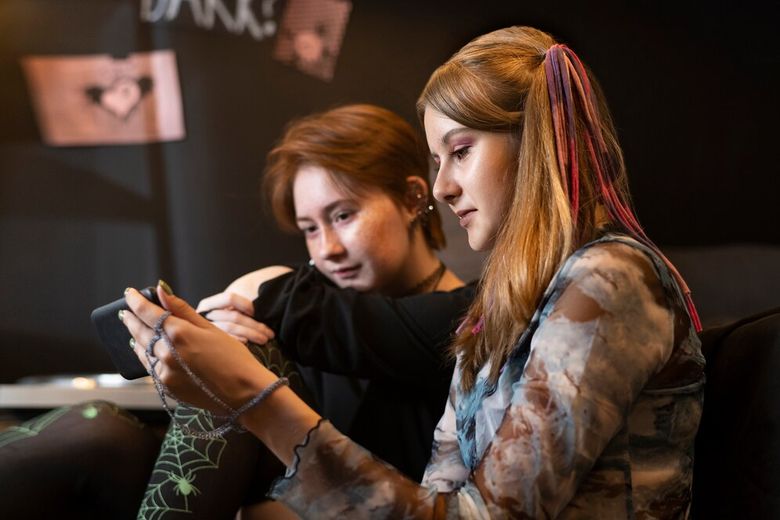Let’s face it: being a student is a full-time job. Now, try mixing that with a K-pop obsession. Or an interest in K-dramas. Or a fascination with Korean fashion trends. That’s not just a lifestyle—it’s a juggling act. For millions of young people immersed in the vibrant world of K-culture, striking a study-life balance can feel like learning choreography on a treadmill. Yet somehow, they manage. And here’s the secret ingredient: smart apps for students. Not just shiny icons on a screen. These are lifelines.
A Double Life: Students by Day, K-pop Fans by Heart
K-culture isn’t a side hobby anymore—it’s a commitment. In 2024, surveys showed that 1 in 4 global teens followed at least one K-pop group closely, often spending up to 10 hours a week watching content, participating in fan communities, or learning Korean. That’s time usually earmarked for textbooks and assignments.
But today’s learners are strategic. They don’t want to give up on their passions, nor do they want their GPAs to nosedive. So how do they pull it off?
Answer: digital productivity tools. The right app doesn’t just remind you when your chemistry homework is due—it helps you optimize downtime, structure study sessions, and even make learning… fun? For example, the math AI app can offer step-by-step solutions to problems based on photos. It’s fast, efficient, simple, and most importantly, accurate.
The App Arsenal: Learning Tools for Busy Students
Let’s break it down. There’s not one magic app that does everything, but rather a constellation of tools, each playing a role in this delicate balancing act.
- Pomodoro apps with K-pop soundtracks: Ever tried studying with EXO in the background? Surprisingly effective. Many students swear by apps like Focus To-Do that combine the Pomodoro method with music. You study for 25 minutes, take a 5-minute break—maybe watch a music video or scroll through K-fashion TikToks—and repeat. It works. It’s science. Brains love rhythm.
- Language learning platforms: If you’re into K-culture, chances are you’ve dipped a toe into Korean. Apps like Drops or HelloTalk make language learning gamified and visual, perfect for multitaskers. Some even include vocabulary from dramas and lyrics. Learn Korean while commuting? Check.
- All-in-one planners: Think Notion, Todoist, or MyStudyLife. Students use these to build flexible schedules that accommodate both study marathons and BTS comeback streams. It’s like having a personal assistant who understands the importance of both calculus and choreography.
- Education and entertainment apps: Duolingo with its streaks. Quizlet with flashcards. Spotify with lyric translations. When apps blur the line between learning and play, students are more likely to stay engaged. The blend is intentional.
Study with Music? Yes, Please
There was a time when music during study was considered a distraction. Not anymore. A study from the University of Tokyo (2023) found that students who listened to instrumental K-pop tracks while studying reported 21% higher focus retention than those in silence. Why? Music helps block environmental noise, improves mood, and, in some cases, creates mental associations that aid memory.
Many apps are jumping on this bandwagon. Playlists are now built into study tools. Some even adapt the tempo based on your typing speed. K-pop fans studying with lo-fi versions of “Butter” by BTS? Completely normal.
K-Culture Education Is a Real Thing
This isn’t just fan behavior anymore. Universities around the world, from UCLA to Yonsei, offer courses in K-culture education, analyzing media trends, fan behavior, and cultural influence. And you better believe students in those courses are using apps to annotate videos, sync subtitles, and collaborate in real time with classmates across continents.
Even platforms like Google Docs now serve as fandom think tanks. Imagine discussing a BLACKPINK documentary while drafting a comparative cultural essay—simultaneously.
Struggles? Sure. But They Adapt.
Nobody’s saying it’s easy. Between live-streamed fan meetings, merch drops, midterms, and social obligations, the study-life balance can tilt dangerously. But what sets K-culture fans apart is their adaptability.
When time is short, they switch to microlearning apps—think 5-minute lessons. When energy is low, they watch subtitled content and count it as “language immersion.” When motivation is missing, they turn to online community groups that host virtual study sessions with K-pop breaks. It’s a rhythm. An ecosystem.
The Numbers Don’t Lie
According to a 2024 digital learning report, students using three or more smart learning tools were 43% more likely to meet their academic goals without giving up personal interests. That’s a big deal. It means the future of learning might not be rigid, top-down, or old-school. It could look more like a fan café mixed with a study lab—flexible, digital, and deeply personal.
Final Thoughts: This Is the New Normal
What we’re seeing isn’t a clash between distraction and discipline—it’s a merger. Smart apps for students are making space for both focus and fandom. Education and entertainment apps, when used strategically, are helping build habits that don’t sacrifice joy for performance.
So the next time someone scoffs at a student for watching variety shows during a study break, remind them: that student might also be managing three group projects, learning Korean, and acing finals. All with the help of carefully curated, intentionally selected, hyper-optimized digital tools.
The world of K-culture isn’t just a stage. It’s a classroom too. And with the right tools in hand, students aren’t choosing between passion and performance. They’re owning both.


 3 weeks ago
11
3 weeks ago
11







![[Weekly KPOP Chart] Week 1 of May 2025](https://kpopreviewed.com/wp-content/uploads/2025/05/wk1may25.png)












 English (US) ·
English (US) ·